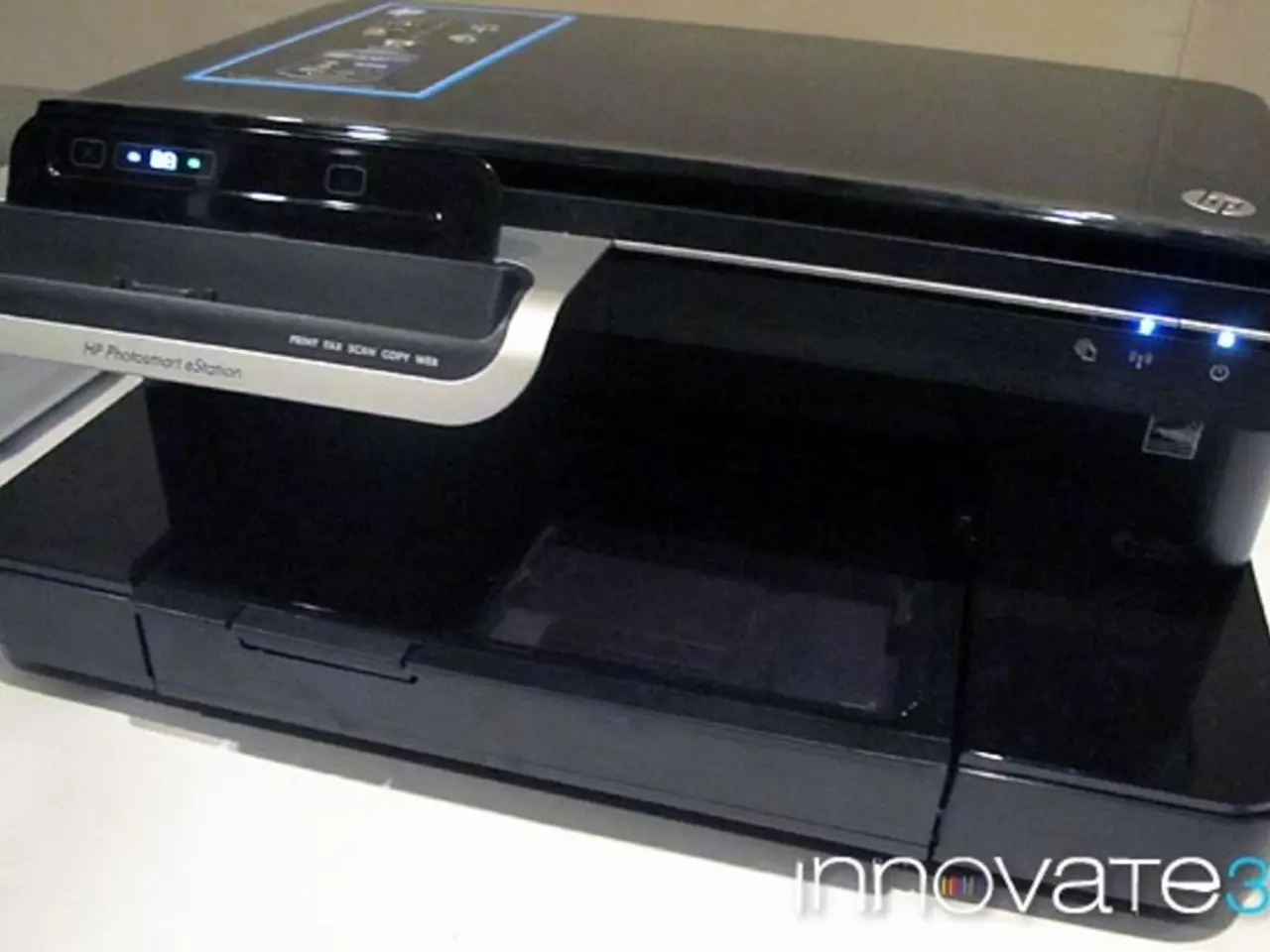Researchers Successfully 3D Print Miniature Elephants and Barcodes Within Cellular Structures for the Initial Time
In a groundbreaking development, a team of researchers has successfully 3D-printed microscopic structures, including an elephant and barcodes, inside living cells for the first time. This achievement, made possible through the use of two-photon polymerization (TPP) and a biocompatible photoresist, could open up a new dimension in biology and cell research [1].
The process begins with the injection of a droplet of a negative photoresist, a liquid material that remains soluble until exposed to a specific laser wavelength, directly into the living cell's interior. Using two-photon photolithography, a highly precise laser technique, the researchers focus laser light to a tiny volume inside the photoresist. When two photons simultaneously hit this targeted small area, the photoresist solidifies only there, allowing the construction of intricate 3D microstructures [2].
The precision of TPP confines polymerization strictly to the laser focus point, meaning the rest of the cell and unexposed photoresist remains unaffected and is later dissolved away, significantly reducing laser exposure and toxicity [3]. The photoresist used is optimized to be as biocompatible as possible, minimizing harmful interactions with the cell [4].
Despite inherent risks, around half of the cells survived the 3D printing process, indicating that the technique does not critically damage the cell's viability or functions [1][3]. This opens up possibilities to engineer cellular interiors with new synthetic components for tracking and modifying cell behaviour, with minimal harm to the cells themselves [1][5].
One potential application of this breakthrough is barcoding, which involves writing a specific code on each cell for identification and long-term tracking. The researchers also suggest using the technique to print custom tools directly inside living cells, such as mechanical levers to measure force, barriers to isolate parts of a cell [5].
Another exciting application is the creation of microlasers, which once lit, emit a unique color of light based on their size, providing a potential tool for cell tracking [6]. The researchers propose using a water-soluble, hydrogel-based photoresist in the future to enable larger or more complex structures to be printed anywhere inside the cell [7].
This study, available on arXiv, could lead to a new way of studying, labeling, and customizing cells without altering their genetic material [1]. The researchers suggest that this breakthrough opens up an entirely new dimension in biology, allowing for reprogramming cells from the inside without changing their DNA [8].
In conclusion, the key to avoiding damage is the use of a highly localized laser polymerization process (two-photon photolithography) combined with a biocompatible, injectable photoresist, enabling the creation of 3D microstructures inside a cell while maintaining cell survival and function [1][3]. This revolutionary technique could pave the way for a new era in cell research and biology.
[1] Researchers 3D print microscopic structures inside living cells for the first time. (2021, September 20). Retrieved September 21, 2021, from https://phys.org/news/2021-09-microscopic-structures-living-cells.html [2] Two-photon polymerization. (n.d.). In Wikipedia. Retrieved September 21, 2021, from https://en.wikipedia.org/wiki/Two-photon_polymerization [3] 3D printing inside living cells. (n.d.). In ScienceDirect. Retrieved September 21, 2021, from https://www.sciencedirect.com/topics/materials-science/3d-printing-inside-living-cells [4] Biocompatible photoresist. (n.d.). In Encyclopedia Britannica. Retrieved September 21, 2021, from https://www.britannica.com/technology/photoresist [5] 3D printing inside living cells opens up possibilities for cell engineering. (2021, September 20). Retrieved September 21, 2021, from https://www.technologynetwork.com/news/3d-printing-inside-living-cells-opens-up-possibilities-for-cell-engineering-363524 [6] Microlasers for cell tracking. (n.d.). In IOP Publishing. Retrieved September 21, 2021, from https://iopscience.iop.org/article/10.1088/1361-6463/aa70a2 [7] Water-soluble, hydrogel-based photoresist for 3D printing inside living cells. (n.d.). In arXiv. Retrieved September 21, 2021, from https://arxiv.org/abs/2109.06764 [8] 3D printing inside living cells could reprogram cells from the inside without changing their DNA. (2021, September 20). Retrieved September 21, 2021, from https://www.interestingengineering.com/3d-printing-inside-living-cells-could-reprogram-cells-from-the-inside-without-changing-their-dna
- This groundbreaking achievement in science, made possible through technology like two-photon polymerization (TPP) and biocompatible photoresist, could revolutionize medicine by enabling the 3D printing of structures inside living cells.
- The future of biology research may involve the use of technology to create microscopic structures within cells, such as barcodes for identification and long-term tracking, miniaturized mechanical levers for measuring force, and even microlasers for cell tracking.
- The precision of TPP ensures that only a targeted small area within the photoresist solidifies, minimizing harmful interactions with the cell and reducing laser exposure and toxicity.
- This breakthrough in 3D printing inside living cells could lead to advancements in health and wellness, as it offers a new way to study, label, and customize cells without altering their genetic material.
- In the future, researchers may employ a water-soluble, hydrogel-based photoresist to print larger or more complex structures within cells, further expanding the potential applications of this technology in various medical-conditions and cell research.




